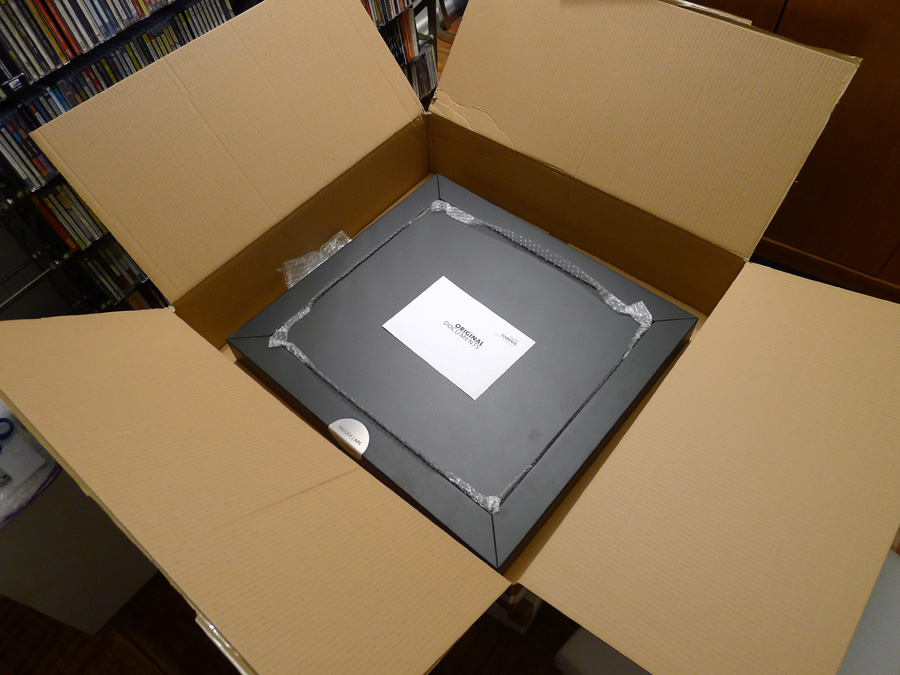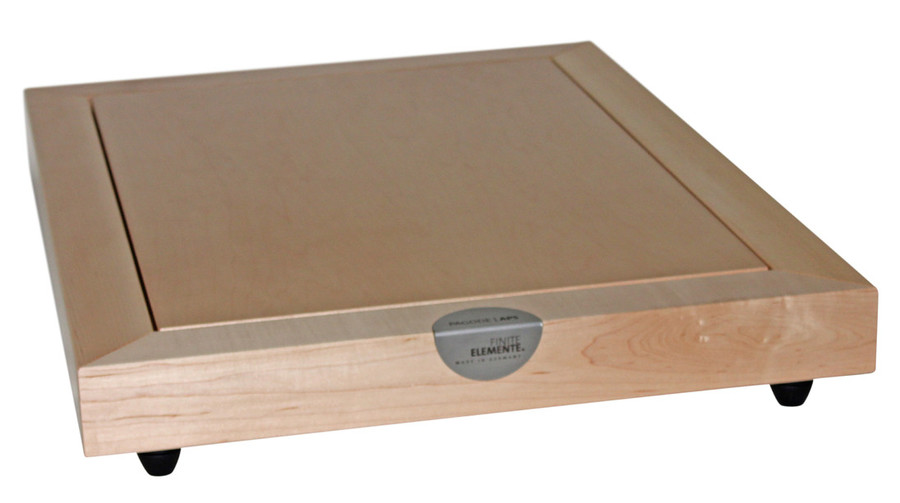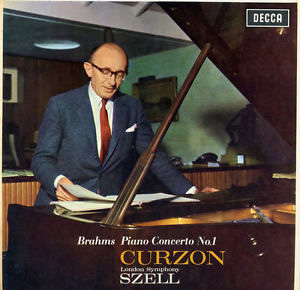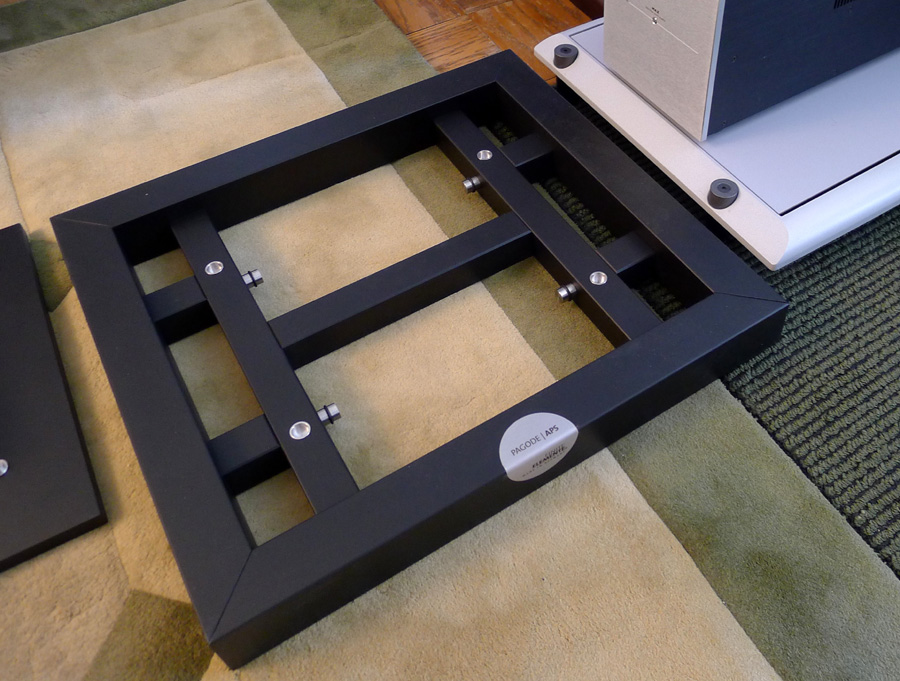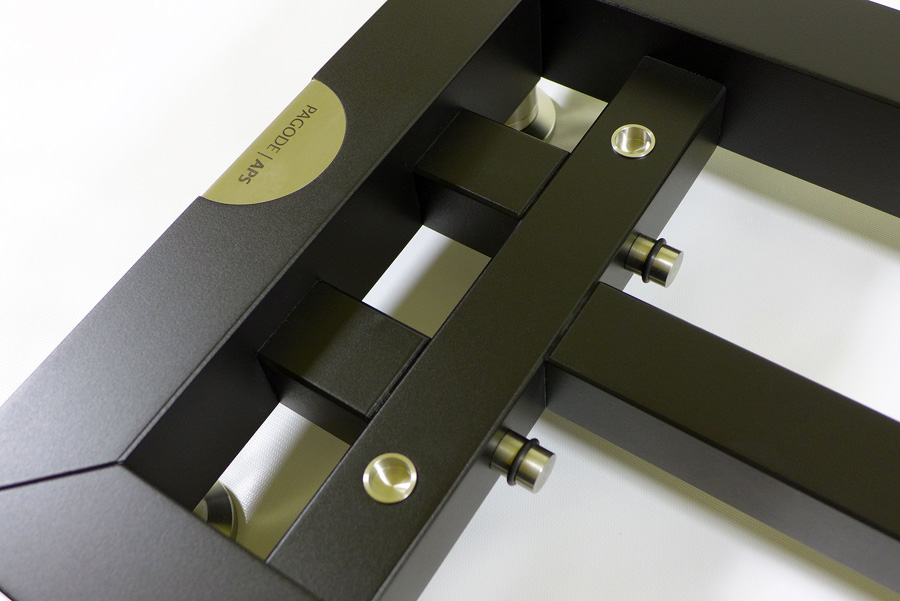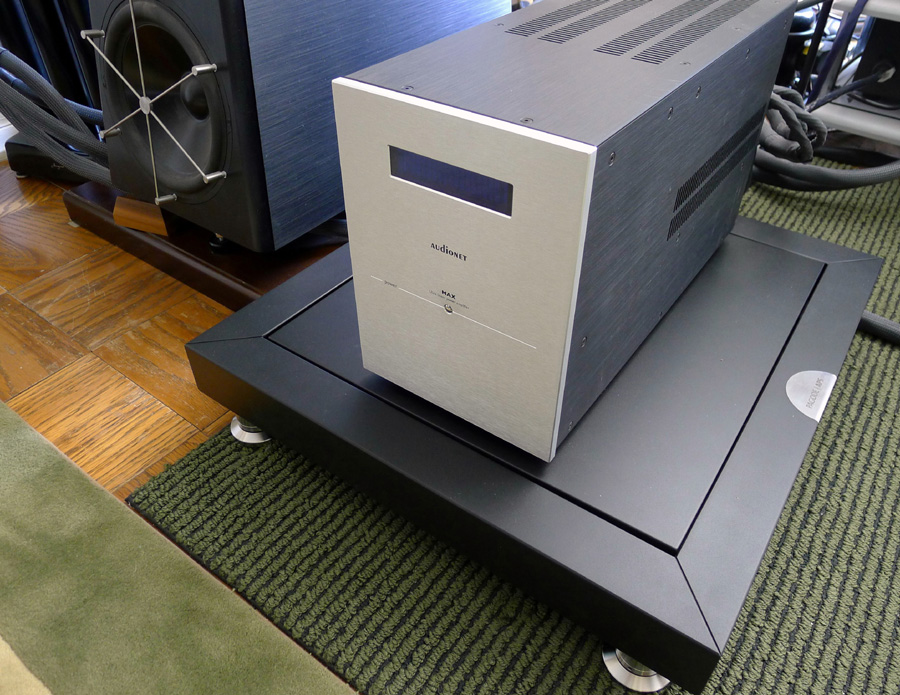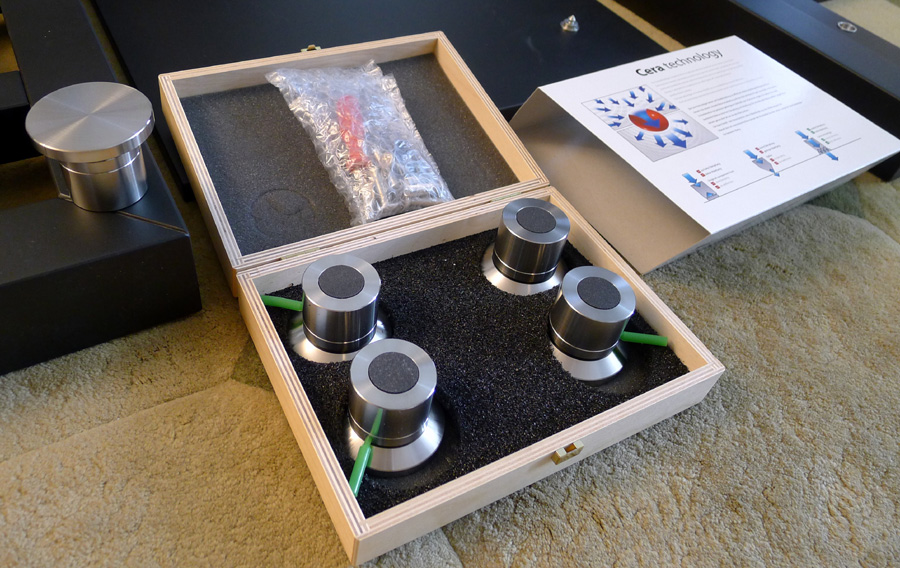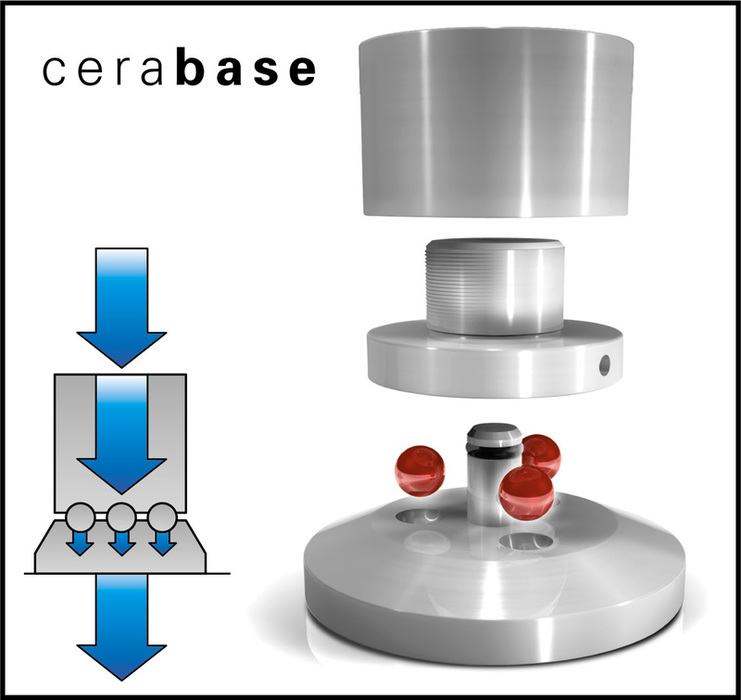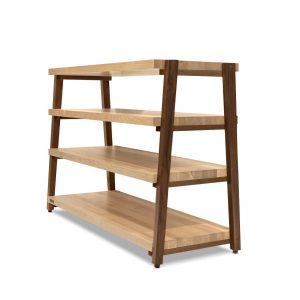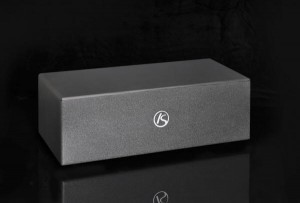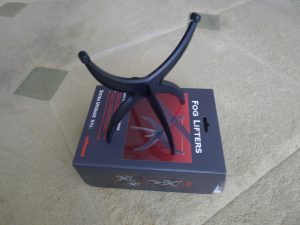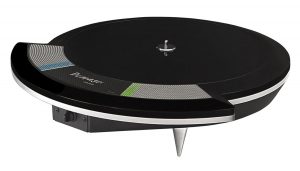I'm no longer responsible. I've relinquished control—the system has taken over. I'm only along for the joyride, afforded aural thrills on a regular basis that are beyond what I could have imagined only yesterday, as the system spirals ever upward in its willful pursuit. Ah, yes, there's no doubt about it. We're in a Golden Age of Audio—all you need is the scratch to pony up.
Only a slight problem has been building over time. Those great thrills are reserved for a fraction of source material. When I put on an ordinary commercial CD or LP, the production deficiencies pop out like a bad case of acne. Yuck! That means about eighty percent of my collection does not get air play. I've known about this for a long time but, alas, there was nothing to be done. It seemed inevitable. If you want to dine like a king, you don't go to Wendy's, do you? Shopping has been made a lot easier. I only have to hone in on a handful of labels. Everything else is ignored, unless an item is of extraordinary musical value.
"That's a catchy little ditty," I commented about the Henry Litolff piece on track 1 of Masterpieces in Miniature, with Michael Tilson Thomas and the San Francisco Symphony (SFS 0060, SACD).
"Well, it's a scherzo, which means joke in Italian," Lynn informed. By now we had played it three or four times in succession.
Room Filling Sound
Except this last time the fog had lifted. The SFS was assembled in the room, clearly defined, the hall ambience nicely recreated, pushing out the boundaries of the stage, adding lateral spread and layers of depth. I was able to hear each note of the piano runs; they used to come and go in a blur.
There was a drop in the tonal balance—at any rate, the treble was not as prominent. Where the triangle used to be up front and borderline screechy, now you savored the shimmering waves of its decay, but it was no longer in the foreground. Everything relaxed; tone became sweet, almost silken and the track became easier to listen to.
All of this occurred post-installation of a pair of Finite Elemente Pagode APS Amp Stands.
Problem Correction
Another example: Just prior we had listened to the Brahms Piano Concerto No. 1, with Curzon and Szell (ORG 45 RPM LP). The recording is known for the outstanding performance, if not great sound. Even on this high-quality reissue, the problems were distressing: very aggressive, edgy transients; hyped dynamics; artificial separation of the instruments; less than ideal string tone.
After the swap, the strings lost their aggressive treble edge and toned down, becoming midrangy, and gained mass. At first it was startling, but acclimation to the reduced treble happened fast. In short order there were no complaints of it being dark. Like with the SFS SACD, many of the problems disappeared. You were left with something that was easier to read. You didn't have to work as hard to get past the remaining issues.
The APS amp stand is one of those audio products that make it seem as if better musicians have suddenly appeared on the stage, resulting in superior music-making. The performance is a real head-turner. This tells me there was some powerful tuning going on. Actually, it's more like repair work.
The Unanswered Question
Whenever I determine that tuning is at work I become concerned. What was the means, and was it too much? The unanswered question popped into my mind: what happens when the strings are supposed to be edgy?
I knew there were four resonators in each APS platform and I wondered if they functioned like other resonator products. My ASI Resonators are tiny metal cups placed around the room at strategic points. When air-borne energy impinges on them, they become excited and release sound back into the room. The ASI are available in a variety of metals and each metal is tuned to resonate/embellish a different, harmonically pleasing, frequency band. For example, the silver helps the upper mids/lower treble; the gold embellishes the midrange.
Because the ASI emit sound themselves they add bloom and bring the soundstage into the room to a degree—both nice effects. They are passive devices in the sense that they don't plug into the wall. However, because they interact with the signal in that they change incoming energy into some other frequencies, I consider them active.
Introduction to Resonator Principles
Then I started my investigation. What I found on Finite Elemente's site more than satisfied my curiosity. It impressed me like a master stroke of creativity. The website walks you through the analysis with graphs and examples.
You can read their white paper "Modal analysis of a conventional hi-fi rack" here.
It is well known that all materials have nodes or excitation points. Component chassis, even the circuit boards within, get the shakes. Some manufacturers take pains to reduce resonances; usually this involves some form of damping. This is broadband resonance damping. Another solution is to shift the disturbing frequency to an unobtrusive part of the frequency spectrum. There is an entire industry of third party tweaks to address the effects of sound distorting resonances.
It is also known that the support under a component has an effect on the sound. Finite Elemente measured a tubular steel rack with solid MDF component shelves and a wood rack filled with sand and/or lead pellets in their laboratory. When sonic or vibrational energy impinged on them both types of racks exhibited high amplitude resonant nodes. The impact can be heard as:
Compression—limited dynamic scope
Reduced three-dimensionality
Tonal displacements
Insufficient resolution of detail
Finite Elemente Resonator Design
With this in mind, Finite Elemente built audio shelving. The first goal was to minimize resonant nodes as much as possible. Using the same laboratory measuring tools they determined the precise excitation frequencies of those that remained. Next, they developed resonators to match those excitation points. Let's say the platform has a node at 512Hz, for example. They built a resonator precisely tuned to 512 Hz and attached it to the platform. Since the resonators respond faster than the platform material, when annoying oscillation energy hits the shelf, the resonator quickly gets excited, converts it to thermal energy, and nulls it before it affects the platform.
Oscillation amplitudes within technical systems that are excited by airborne or solid borne noise can be clearly reduced by integrating or adapting resonators. Resonators are rod-shaped metal components where their first natural frequency is matched to the excitation frequency or the system's natural frequency. Large amounts of the kinetic energy – with natural excitation up to 90%, with forced excitation up to 70% - are inaudibly converted by the resonators into heat.
As implemented in the Pagode Master Reference and EPS, four resonators are bolted to the sides of each platform. Lab test results of the Pagode MR rack with resonators showed improvement everywhere:
Holographic three-dimensionality
Perfect tonality
Superior precision of detail
Exceptional dynamic scope
Extreme homogeneity in sound
This strikes me as a brilliant, non-invasive application of resonators. Non-invasive because it is eliminating an artifact; it doesn't alter the signal.
Build Quality and Construction
These amp stands look beautiful. Made of well-turned maple, they are finely—make that flawlessly—finished. They look like a piece of fine furniture. Different color finishes are available. The lightweight APS stands feature a high-absorption platform that couples to the frame with four steel cones.
Additional steel spikes couple the frame to the floor. Those steel spikes can be replaced with Cerabase Classic footers, for a nice upgrade. (I didn't have time to test the supplied spikes vs. the Cerabase footers. I accepted them based on their very positive reputation.)
Position your amp centered on the platform so the effect of the four resonators will be balanced.
Conclusion
I'm sure you will be caught off guard with the dramatic changes wrought by the Finite Elemente Pagode APS Amp Stands—I was. They have the ability to eliminate sound degrading artifacts created by your audio furniture. That's right: along with the good stuff, your audio furniture is also the source of sonic degradations. Hard to believe, but you'll hear the difference. Treble edginess goes away and the presentation relaxes.
The APS Amp Stands were developed using laboratory measuring tools and have solid scientific principles behind them. The platforms incorporate a brilliant and novel use of resonators to eliminate excitation nodes from your component shelving. The tuning is non-invasive and of a musical sort.
They ain't cheap, especially when you add in the Cerabase Classic footers. However, thinking like a comparison shopper, if you were to spend the same dollar amount on a cable upgrade, I doubt you would get an equivalent boost. When you swap your amp platforms for the Pagode APS, the resultant sound is what I associate with the best demo rooms at shows and dealer establishments. One of my goals now is to get better playback from ordinary CDs and LPs. The Finite Elemente Pagode APS Amp Stands help everything you play. Marshall Nack
Pagode APS Amp Stand
Retail: $2370 ea
Cerabase Classic Footer
Retail: $1060 set/4 pcs
Finite Elemente
www.finite-elemente.de/finite-elemente
Distributor
Aaudio Imports
Parker, CO 80134
Phone: 720-851-2525
www.aaudioimports.com




